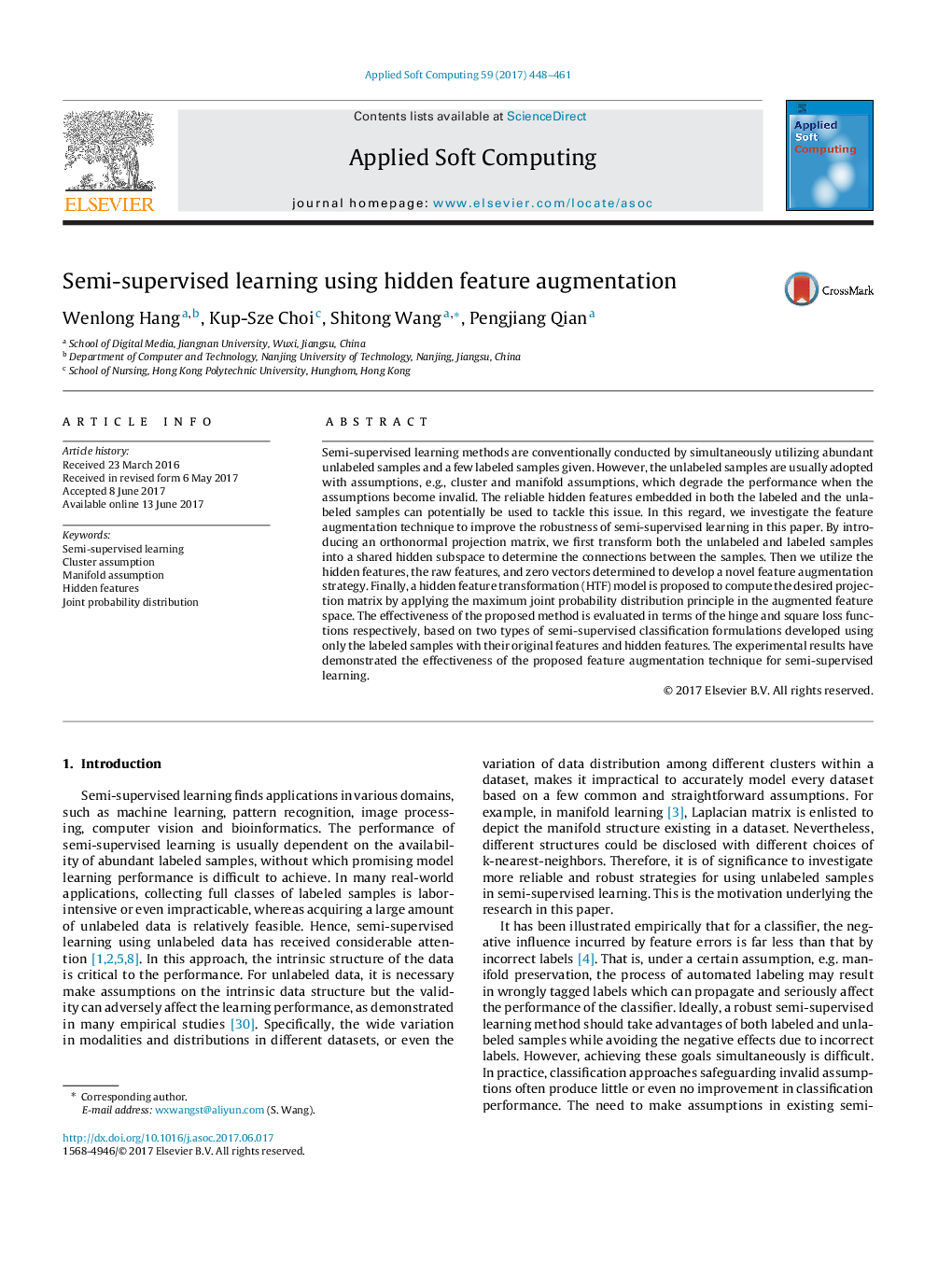| Article ID | Journal | Published Year | Pages | File Type |
|---|---|---|---|---|
| 4963135 | Applied Soft Computing | 2017 | 14 Pages |
â¢The novel feature augmentation method, which utilizes the hidden features, the raw features, and zero vectors, is proposed.â¢The novel hidden feature transformation model is proposed based on the maximum joint probability principle.â¢With hinge loss function and least square loss function, two semi-supervised classification formulations are proposed.
Semi-supervised learning methods are conventionally conducted by simultaneously utilizing abundant unlabeled samples and a few labeled samples given. However, the unlabeled samples are usually adopted with assumptions, e.g., cluster and manifold assumptions, which degrade the performance when the assumptions become invalid. The reliable hidden features embedded in both the labeled and the unlabeled samples can potentially be used to tackle this issue. In this regard, we investigate the feature augmentation technique to improve the robustness of semi-supervised learning in this paper. By introducing an orthonormal projection matrix, we first transform both the unlabeled and labeled samples into a shared hidden subspace to determine the connections between the samples. Then we utilize the hidden features, the raw features, and zero vectors determined to develop a novel feature augmentation strategy. Finally, a hidden feature transformation (HTF) model is proposed to compute the desired projection matrix by applying the maximum joint probability distribution principle in the augmented feature space. The effectiveness of the proposed method is evaluated in terms of the hinge and square loss functions respectively, based on two types of semi-supervised classification formulations developed using only the labeled samples with their original features and hidden features. The experimental results have demonstrated the effectiveness of the proposed feature augmentation technique for semi-supervised learning.
